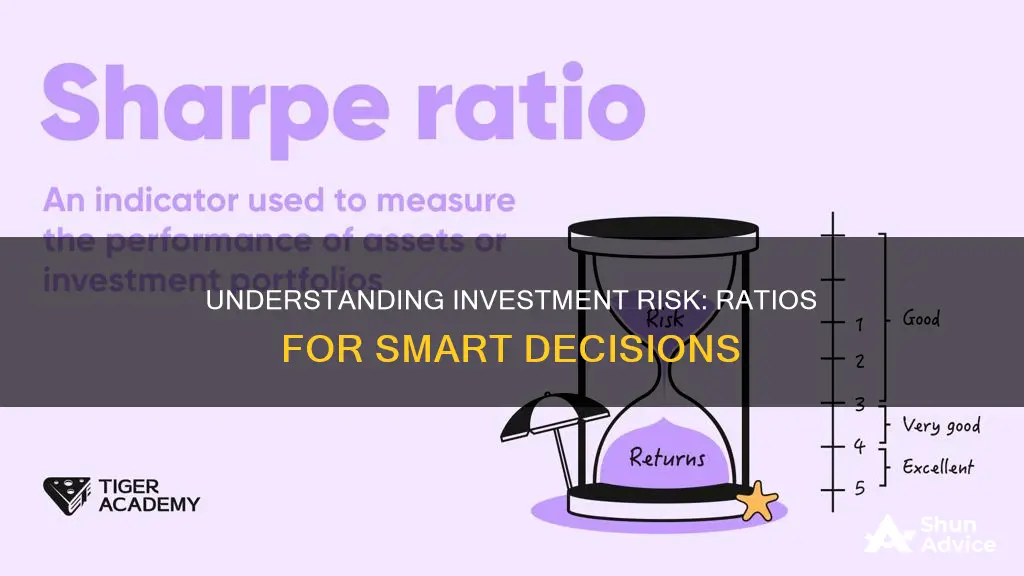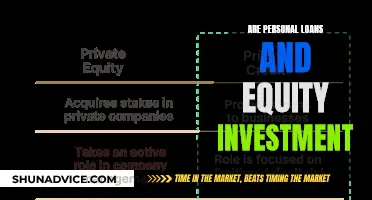
The risk-reward ratio is a measure used by investors to evaluate the level of risk they must accept against the potential returns they could achieve. In other words, it gives investors an idea of the potential for loss against the potential for gains. A risk-reward ratio of 1:1 indicates that the investor faces the possibility of losing the same amount of capital that they stand to gain through positive returns. A lower risk-reward ratio is often preferable as it signals less risk for an equivalent potential gain.
| Characteristics | Values |
|---|---|
| Definition | The risk-reward ratio enables investors to evaluate the level of risk they must accept against the potential returns they could achieve. |
| Purpose | To give investors a level of visibility into each investment's potential for loss against its potential for gains. |
| Calculation | The risk-reward ratio can be computed as one's personal risk tolerance on an investment, or as the objective calculation of an investment's risk/return profile. |
| Optimal Ratio | This differs widely among various trading strategies. Market strategists find the ideal ratio to be approximately 1:3. |
What You'll Learn

Risk-reward ratio
The risk-reward ratio gives investors a level of visibility into each investment's potential for loss against its potential for gains. For example, a risk-reward ratio of 1:1 indicates that the investor faces the possibility of losing the same amount of capital that they stand to gain through positive returns. Each investor can set their threshold for acceptable risk. A more risk-tolerant investor might be willing to accept a ratio that indicates a higher risk for the same level of reward, while a risk-averse investor might consider a 1:3 ratio as high risk and not worth the investment. Market strategists often find the ideal risk/reward ratio for their investments to be approximately 1:3.
The risk/reward ratio can be computed as one's personal risk tolerance on an investment, or as the objective calculation of an investment's risk/return profile. In the latter case, expected return is often used in the denominator and potential loss in the numerator. Expected return can be computed in several ways, including projecting historical returns into the future, estimating the weighted probabilities of future outcomes, or using a model like the capital asset pricing model (CAPM).
Low-Risk Investment Strategies: Safe Ways to Grow Your Money
You may want to see also

Risk tolerance
The risk-reward ratio, also known as the risk-return ratio, marks the prospective reward an investor can earn for every dollar they risk on an investment. Many investors use risk-reward ratios to compare the expected returns of an investment with the amount of risk they must undertake to earn these returns. A lower risk-return ratio is often preferable as it signals less risk for an equivalent potential gain. The risk-reward ratio can be computed as one's personal risk tolerance on an investment, or as the objective calculation of an investment's risk-return profile. In the latter case, expected return is often used in the denominator and potential loss in the numerator. Expected return can be computed in several ways, including projecting historical returns into the future, estimating the weighted probabilities of future outcomes, or using a model like the capital asset pricing model (CAPM).
Investing in Equipment: A Smart Move to Boost Equity
You may want to see also

Trading strategies
The risk-reward ratio is a measure used to compare the expected returns of an investment with the amount of risk undertaken to earn these returns. The ratio enables investors to evaluate the level of risk they must accept against the potential returns they could achieve. In a risk-reward ratio, the risk is the amount of money that could be lost in the investment, and the reward is the monetary value of the gains that could be reaped.
For example, a risk-reward ratio of 1:1 indicates that the investor faces the possibility of losing the same amount of capital that they stand to gain through positive returns. Each investor can set their threshold for acceptable risk. A more risk-tolerant investor might be willing to accept a ratio that indicates a higher risk for the same level of reward, while a risk-averse investor might consider a 1:3 ratio as high risk and not worth the investment. Market strategists often find the ideal risk/reward ratio for their investments to be approximately 1:3.
The risk/reward ratio can be computed as one's personal risk tolerance on an investment, or as the objective calculation of an investment's risk/return profile. In the latter case, expected return is often used in the denominator and potential loss in the numerator. Expected return can be computed in several ways, including projecting historical returns into the future, estimating the weighted probabilities of future outcomes, or using a model like the capital asset pricing model (CAPM).
Owner's Investment vs Equity: What's the Difference?
You may want to see also

Risk management
The risk-reward ratio is often used as a measure when trading individual stocks. The ratio can be computed as one's personal risk tolerance on an investment, or as the objective calculation of an investment's risk/return profile. In the latter case, expected return is often used in the denominator and potential loss in the numerator. Expected return can be computed in several ways, including projecting historical returns into the future, estimating the weighted probabilities of future outcomes, or using a model like the capital asset pricing model (CAPM).
In a risk-reward ratio, risk is the amount of money that could be lost in an investment. In a stock purchase, that amount is the actual capital value, or the actual dollar amount, that could be lost. In a project scenario, risk represents the value of resources being put toward the project. The reward is the monetary value of the gains that could be reaped from completing the project.
The optimal risk-reward ratio differs widely among various trading strategies. Some trial-and-error methods are usually required to determine which ratio is best for a given trading strategy, and many investors have a pre-specified risk-reward ratio for their investments. A lower risk/return ratio is often preferable as it signals less risk for an equivalent potential gain. For example, a risk-reward ratio of 1:1 indicates that the investor faces the possibility of losing the same amount of capital that they stand to gain through positive returns. A more risk-tolerant investor might be willing to accept a ratio that indicates a higher risk for the same level of reward, such as 1:3, while a risk-averse investor might consider a 1:3 ratio as high risk and not worth the investment.
Investors can manage risk/reward more directly through the use of stop-loss orders and derivatives such as put options.
Global Share Portfolio: Invest in BizNews for Future Success
You may want to see also

Calculating risk/reward ratio
The risk/reward ratio is a way of measuring the level of risk an investor must accept against the potential returns they could achieve. The risk is the amount of money that could be lost in the investment, and the reward is the monetary value of the gains that could be reaped. The ratio is often used as a measure when trading individual stocks, and it can be computed as one's personal risk tolerance on an investment, or as the objective calculation of an investment's risk/return profile.
The risk/reward ratio gives investors a level of visibility into each investment's potential for loss against its potential for gains. For example, a risk-reward ratio of 1:1 indicates that the investor faces the possibility of losing the same amount of capital that they stand to gain through positive returns. Each investor can set their threshold for acceptable risk. A more risk-tolerant investor might be willing to accept a ratio that indicates a higher risk for the same level of reward, while a risk-averse investor might consider a 1:3 ratio as high risk and not worth the investment. Market strategists often find the ideal risk/reward ratio for their investments to be approximately 1:3.
The risk/reward ratio can be calculated in several ways. Expected return can be projected by estimating the weighted probabilities of future outcomes or using a model like the capital asset pricing model (CAPM).
Managing FDI: Strategies for Decision-Making in Global Markets
You may want to see also
Frequently asked questions
The risk/reward ratio is a measure of the amount of money that could be lost in an investment against the potential returns.
The risk/reward ratio is calculated by dividing the expected return by the potential loss. For example, a risk-reward ratio of 1:1 indicates that the investor could lose the same amount of money that they stand to gain.
A lower risk/reward ratio is often preferable as it signals less risk for an equivalent potential gain. Many market strategists find the ideal risk/reward ratio to be approximately 1:3.
Investors use the risk/reward ratio to compare the expected returns of an investment with the amount of risk they must undertake to earn these returns. Each investor can set their own threshold for acceptable risk.







